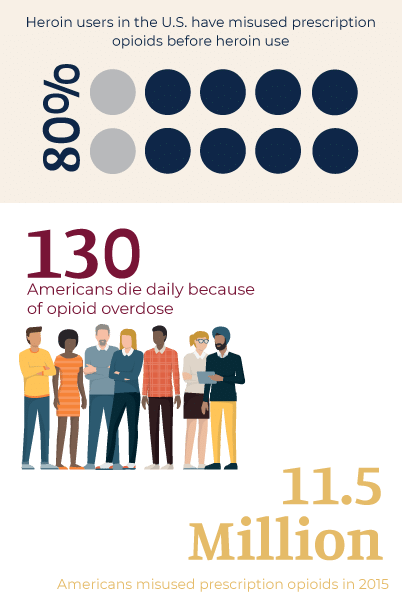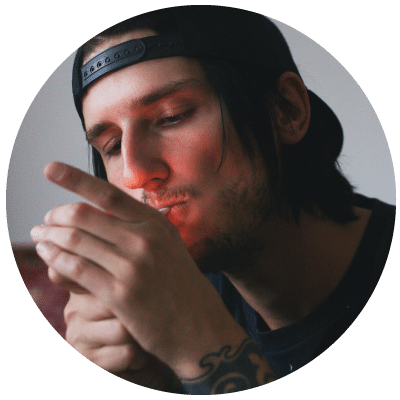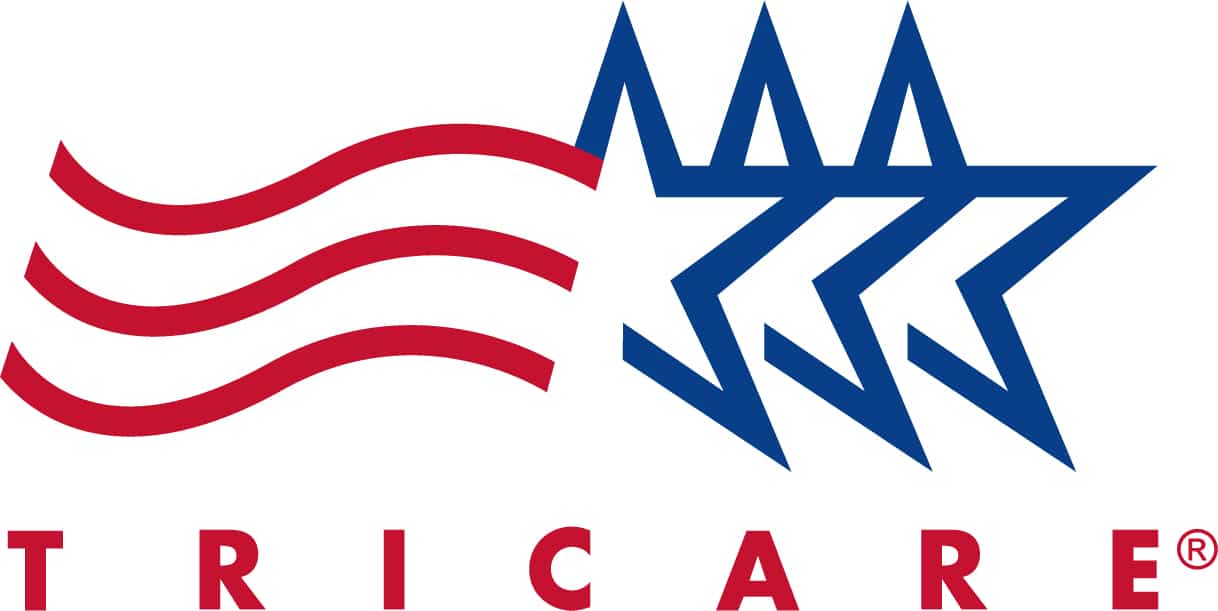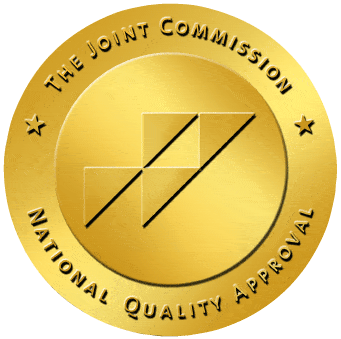2023 Guide to the Deadly Heroin Epidemic

2023 Guide to the Deadly Heroin Epidemic
What is Heroin?
Heroin is a highly addictive substance that belongs to a group of drugs called narcotics, opiates, or opioids. Opioids are used for relieving severe pain. Heroin is naturally extracted from a plant known as opium poppy, which mostly grows in Mexico, Colombia, and South Asia. Heroin is synthesized from morphine and much more effective. Heroin is around 8.3 times more effective than morphine.9 While it is currently illegal in the US, there was a time when heroin was legal, acceptable, and medically prescribed not only for adults but also for children. So, what happened?History of Heroin
A deep look at heroin’s history can help to better understand why it has become illegal and is strongly prohibited worldwide nowadays.
Heroin Abuse After Prescriptions
Heroin used properly is still addictive and has serious effects. Patients who were being treated developed a tolerance quickly, which made them continuously need to take increasingly higher doses, even when it was hurting them.
Even after the treatment course of heroin, the majority of patients continued to take it, even though it is not necessary medically. Patients reported experiencing serious withdrawal symptoms whenever they tried to quit, making them unable to beat the addiction.
Heroin Street Names
Being a street drug, heroin is known by many different names. It is important to know all the names so that you can clearly identify what you or a loved one are actually taking.
H
Hell Dust
The Dragon
Dr. Harry
China White
Diacetylmorphine
Diamorphine
Big H
Horse
Hammer
Black Tar
Homebake
Poison
Morphine Diacetate
Junk
Dope
Smack
Harry
White Dynamite
Gear
Chinese H
How is Heroin Used
As a street drug, dealers sell heroin in many different forms to make it easy to use and increasing its demand, e.g., white powder; brown powder; and a black, sticky substance known as black tar heroin.
Heroin is commonly taken as follows:
- Intravenous injection
- Snorting
- Sniffing
- Smoking in cigarettes either with or without cannabis
- Some also combine it with cocaine or meth to create a "speedball"
Myths and Misconceptions About Heroin
Heroin is Too Expensive for Kids to Get
One of the most common misconceptions about heroin is that it is too expensive for kids to get. Actually, children from ages 12 and up are part of the 652,000 Americans who used heroin in 2017.10 The majority of teens taking it tend to buy a certain type that is only snorted, which is much cheaper to manufacture and sell.
Prescription Opioids Don’t Cause Addiction
Even is prescribed Opioids can become addictive. Once you are hooked to the prescription, it is much easier to start using illegal heroin.
People Take Heroin Because They Don’t Have Morals
Heroin abuse is not directly related to morals. People from all cultural and religious backgrounds are likely to develop addiction. Often, addiction starts by accident, not by choice.
Only Impaired People Use Heroin
It is true that some people with impaired judgment become addicted; that is not the case for all heroin users. Many users are highly-educated people whose judgment is not impaired.
Heroin is Only Common in the Poor and Big Cities
Heroin usage is common in all people, including in women, high-income classes, big cities, and rural areas as well.
Recovery From Addiction is Rare
Some misconceptions cause more pain than others, such as thinking that heroin recovery is impossible or rare. High mortality rates lead people to believe that an addict would get treatment if treatment worked. That is not the case many people recover from heroin safely and successfully with medical treatment.
What Causes Heroin Addiction?
Three Leading Causes of Addiction
Using Opioids for Recreational Purposes
Mental Health
Problems
Using Prescription
Opioids

According to NBC Universal & World report, every day, 650,000 opioid prescriptions are being dispensed. 3,900 Americans start using opioids for non-medical purposes and 580 Americans start using heroin.
Opioid medications are prescribed to relieve pain, namely Oxycontin®, Vicodin®, Fentanyl®, and Demerol®. In many cases, opioid medications are misused for their mood-changing effects, which can lead to abuse.15
Thinking that prescription opioids are not as risky as illicit drugs make some people take analgesic opioids more than they should, mistakenly assuming they are safe.
Prescription opioids are sometimes taken by persons other than those for whom they are prescribed, thinking that they are just analgesics. This results in opioid side effects, including dependence and overdose.
Opioid dependence and addiction causes some people to switch to heroin because compared to prescription opioids, it is cheaper and easier to get.
Heroin Addiction Symptoms and Effects
Once heroin has been administered, it binds to certain receptors in the brain known as opioid receptors. This is how it relieves pain, affects pleasure, heart rate regulation, sleeping, and breathing.
Heroin affects people differently, based largely on how it was taken; e.g., mixing fentanyl and heroin is dangerous; but affects are also based individual factors, such as age, weight, health status, and dosage.
Short-Term Effects
Heroin short term effects refer to the symptoms noticed on those who take heroin only once, a few times, or for a short duration. Within 3 to 5 hours after administration, you may notice one or more of the effects below:
Desirable Effects
Quick pain
relief
Feeling a rush or high
(euphoria)
High sense of
relaxation
Undesirable Effects
Dry mouth
Nausea and vomiting
Inability to identify whether you are conscious or semiconscious
Tiny pupils
Flushed, warm skin
Severe itching
Drowsiness and clumsiness
Slower than normal breathing
Low libido or sex drive
Heaviness, especially in the arms and legs
Confusion or inability to think clearly
Slurred, slower speech
Slower than normal heartbeat
Long-Term Effects
Heroin’s long-term effects are appear after taking it frequently, heavily, or over a long duration.16
- Insomnia
- Collapsed veins from taking heroin intravenously
- Damage to the nasal tissues from sniffing and snorting heroin
- Diferent infections of the valves and the lining tissues of the heart muscle
- Constipation and stomach cramps
- Abscesses either at the injection site or anywhere else
- Liver and kidney disease
- Lung-related problems such as pneumonia
- Mental disorders such as depression and antisocial personality disorder
- Lack of focus, such as not paying attention to daily tasks or concerns
- Loss of brain white matter, which may affect decision making, behavior control, and responses to stressful situations
Heroin Withdrawal Symptoms
Quitting heroin is always associated with a group of withdrawal symptoms that can be the worst in the first hours or days. Withdrawal symptoms can start around 6 hours or less since the last dose and can continue for 10 days, 2 to 4 weeks, or even longer.
Withdrawal symptoms include:
- Heavy cravings
- Restlessness, irritability, and nervousness
- Yawning
- Fast heartbeat
- Uncontrollable leg movements
- Vomiting
- Runny nose
- Goosebumps and cold flashes
- Depression that sometimes includes unstoppable crying
- Diarrhea, and stomach cramps
- Difficulty sleeping
- Inability to breathe normally
- Low libido
- Sexual dysfunction in men
- Irregular menstrual cycles in women
If heroin is taken during pregnancy, it will pass the placenta to the fetus, causing both the mother and fetus to be heroin-dependent, which is called neonatal abstinence syndrome (NAS). If left untreated quickly, it may result in fetus death.17
An addiction treatment program should be considered as soon as possible to cure the fetus and mother. Treatment may include taking either buprenorphine and methadone during pregnancy, after delivery, or both.
Other Effects
Heroin may also cause a person to be unable to breathe normally. It may decrease the amount of oxygen going to the brain, resulting in a condition called hypoxia. This can, in some cases, be severe enough to cause brain damage.
Some also wonder why heroin is associated with an increased risk of hepatitis B, C, and HIV/ AIDS. This is because of unsafe sex and sharing needles. Impaired judgment causes heroin users to not mind sharing needles or having unprotected sex. Because of these risky behaviors, all blood-borne diseases are common in heroin users.18
Other substances included in heroin preparations can cause adverse effects. Injections containing sugar, milk, and starch can block blood from getting to vital organs such as lungs, liver, kidneys, and brain; causing permanent damage to these organs.
Can a Person Overdose on Heroin?
Deaths because of heroin overdose rose 22.4% between 1999 and 2007, for 2,399 deaths. Since 2007 those deaths have risen 689.9%, for 15,482 deaths.21
In 2017, the deaths resulting from opioid overdose rose by 12% from 42,249 deaths in 2016 to 47,600 deaths; 67.8% of all overdose deaths in the US.22
An overdose of heroin is typically any dose that can cause a person to experience life-threatening symptoms. Therefore, any dose can be an overdose for you, but not for another. This all depends on individual factors such as your age, the efficiency of your kidney and liver, and your health status overall. The strength of the heroin is also a factor.
What if a Person Overdoses on Heroin?
If a person overdoses on heroin, they may experience the following effects:
Trouble
concentrating
Heroin dependence
Feeling cold and
shivering
Irritability
An urge to urinate
Unable to breathe normally, which may lead to hypoxia and brain damage
Immediately falling
asleep
Heavy itching
Death
Who is at Risk of Heroin Addiction?
People of all ages, income classes, and cultures are at risk of heroin addiction, namely:

Babies born to mothers with a heroin addiction

People using prescription opioids

People addicted to alcohol, marijuana, and prescription opioids

Veterans
Opioids versus Other Substances
In a comparison between Americans who are addicted to alcohol, marijuana and prescription opioids, it was found that people addicted to prescription opioids are at the highest risk of using heroin; 40 times the risk than those addicted to alcohol, marijuana, and cocaine.
People addicted to cocaine come in the second place, with a 15x higher risk to use heroin. People addicted to marijuana are at 3x higher risk to use heroin, and people addicted to alcohol come at the mildest stage, with a 2x higher risk to take heroin.
Heroin and Addiction Among Veterans
The number of U.S. veterans who are suffering from opioid addiction has doubled since 2002.23 Prescription opioids are the main factor responsible for addiction among veterans. 65% of U.S. veterans struggle with different kinds of combat-related pain. This is why doctors frequently prescribe high doses of opioid medications. The latter is the first step that frequently leads to addiction.
U.S. veterans also struggle with different psychological disorders, such as post-traumatic stress disorder (PTSD), traumatic brain injury, anxiety, depression, and difficulty in returning to civilian life.
While heroin signs in veterans are the same as anybody else, veterans would need more help, support, and close monitoring as well. Veterans are likely to hide heroin addiction as much as they can, because they may think that heroin addiction is a sign of weakness.24
How to Make Sure Your Child is Not Using Heroin
The 2015 National Survey on Drug Use and Health has shown that 21,000 adolescents who range from 12 to 17-year-olds used heroin in the past year.25
The best you can do to protect your children is to know how to identify heroin use signs at the earliest stages.
Symptoms to watch out for:
- Runny nose
- Dry mouth
- Borrowing or stealing money frequently
- Lack of motivation
- Poor performance in school
- Higher likelihood of infections
- Frequent abscesses
Keep an eye on your child’s behavior. Some questions to consider are the following:
Does your child always wear long-sleeve shirts or sweatshirts? If so, make sure s/he is not trying to hide marks such as the injection site of heroin on the forearm.
Do your child’s pupils look constricted or small without a noticeable change to light?
Does your child sometimes look hyperalert for awhile then exhausted?
Does your child breathe quickly and heavily?
Have you noticed a decline in your child’s health overall?
Have you noticed unexplained weight loss?
Does your child tend to avoid eye contact?
Have you noticed if your child’s speech is slurred?
Heroin Detoxification
Heroin detoxification is possible, common and can be extremely successful.
For successful detoxification, you must know the difference between heroin quitting and heroin addiction treatment.
Heroin Quitting
Heroin quitting is just to quit heroin, without other supports. Going “cold turkey” can cause heroin users to be at a high risk of:
A rapid onset of heroin withdrawal symptoms
A high likelihood to take heroin once again or to even overdose
Death via:
- Diarrhea that may cause severe dehydration
- Depression that may cause heroin users to commit suicide
- Mental changes including impaired judgment leading to risky behaviors
Heroin Addiction Treatment
Medically-supervised detoxification is not just about quitting heroin; it also increases your chance at a successful rehabilitation. Medically-supervised detoxification has three main goals:
- Quitting heroin safely
- Complete heroin recovery
- Restoring overall health
Get the Help You Specifically Need
For a safe heroin recovery, medically-supervised detoxification provides help customized to every person, including:
Individually Designed Rehab Programs
To ensure the best addiction recovery plan for each person.
Medications Approved by the Food and Drug Administration (FDA)
Specifically to manage, lessen, and treat withdrawal symptoms.
Specialized Professionals
That provide around-the-clock medical assistance and support, ensuring a safe recovery.
Your treatment plan will address all your needs, including:
Professionals to monitor blood pressure, heart rate, breathing, and temperature.
Mental-health professionals to treat co-occurring conditions, e.g., depression or anxiety.
Individual factors are taken into consideration, such as how much heroin a certain person took, how long, co-occurring health conditions, age, and weight.
Heroin Rehab Medications
Opioids
When it comes to heroin rehab medications, opioids help very well. There are a couple of opioids approved by the FDA to help heroin addicts recover safely. Both of them replace heroin at the brain receptors, thus decreasing the craving for heroin. Rehab medications include:
Methadone
Methadone displaces heroin from the opioid receptors in the brain to decrease heroin dependence.
Buprenorphine & Suboxone
Buprenorphine is an opioid substance included in a medication called Suboxone that also contains another substance called naloxone. The medication blocks the opioid receptors in the brain so buprenorphine can decrease the addictive effects of misusing opioids during detoxification.
Naltrexone
Naltrexone blocks certain receptors in the brain that heroin and other opioid medications affect. Once naltrexone is taken, the person won’t feel euphoria anymore if an opioid medication is misused. Naltrexone is also an alternative to methadone, and sometimes both are given in a combination.
Codeine Phosphate
Codeine Phosphate also reduces heroin withdrawal symptoms and drug cravings.
Sedatives
Sedatives are some of the most important rehab medications. They usually belong to a class of drugs called benzodiazepines. Sedatives will help calm you down during the worst parts of a detox program.
Clonidine
Clonidine helps to relieve some withdrawal symptoms of heroin, such as anxiety, cramping, muscle aches, agitation, runny nose, and sweating.
Medications for Mental Health
As many heroin users are already having mental health problems, treating those problems can significantly help prevent taking heroin once again.
Other Medications
Depending on which symptoms you are experiencing as well as co-occurring health conditions, a wide variety of medications can be used.
Common Questions About Rehab and Detox
Can Replacement Medications Cause Addiction?
No. Therapy using replacement medications is designed to avoid dependence or addiction, e.g., the gradual increase and tapering of the dose as well as safe discontinuation.
How Long Does Heroin Rehab Take?
Complete recovery varies based on the individual factors discussed in this article, like dosage, frequency, physical health, and mental health. Rehab will usually last between 10-days and two weeks.
Can You Recover at Home?
Generally, there are two types of medically-supervised detoxification, which aim at helping both heroin users needing to stay at the rehab center and those who can recover at home.
Inpatient Detoxification
Generally recommended for all heroin users wanting to quit, especially heavy users as well as those who are likely to need medical assistance during the rehab program.
Outpatient Detoxification
Commonly known as home detox, is recommended only for heroin users whose health status doesn’t necessarily require around-the-clock healthcare for the whole duration of rehab.
Seek Professional Help to Safely Beat Heroin Addiction
The quicker you seek professional help, the more safely and successfully you will quit heroin, and the quicker and better you will restore your health overall.
Seeking professional help should be the first and foremost step to heroin recovery, or to help a loved one struggling with heroin withdrawal symptoms. Recognizing that heroin addiction is treatable is also an important step to get the help you need as soon as possible. The quicker you seek help, the fewer withdrawal symptoms you are likely to experience and the quicker you will recover.
Providing professionals with as many details as you can helps to identify the reasons that caused you or a loved one to use heroin. This is how professionals can help you not only recover from heroin safely and successfully but also to prevent relapse.
Resources
- https://www.asam.org/docs/default-source/advocacy/opioid-addiction-disease-facts-figures.pdf
- https://www.samhsa.gov/data/report/2017-nsduh-annual-national-report
- https://www.drugabuse.gov/publications/research-reports/heroin/scope-heroin-use-in-united-states
- https://www.asam.org/docs/default-source/advocacy/opioid-addiction-disease-facts-figures.pdf
- https://www.drugabuse.gov/related-topics/trends-statistics/overdose-death-rates
- https://www.cdc.gov/drugoverdose/images/data/OpioidDeathsByTypeUS.PNG
- https://www.drugabuse.gov/related-topics/trends-statistics/overdose-death-rates
- Herr, F., Nyiri, M. and Venulet, J. “Studies on the mode of analgesic action of morphine and morphine derivatives,” Acta Physiol. Acad. Scientiarum Hungaricae, 3, 199, 1952.
- https://www.samhsa.gov/data/report/2017-nsduh-annual-national-report
- https://www.hhs.gov/opioids/
- https://www.ncbi.nlm.nih.gov/pubmed/25785523
- https://www.nbcnewyork.com/news/local/Americas-Deadly-Opioid-Epidemic-By-the-Numbers-458709663.html
- https://www.drugabuse.gov/drugs-abuse/opioids/opioid-overdose-crisis
- https://www.drugabuse.gov/publications/research-reports/heroin/how-heroin-linked-to-prescription-drug-misuse
- Qiu Y, Jiang G, Su H, et al. Progressive white matter microstructure damage in male chronic heroin dependent individuals: a DTI and TBSS study. PloS One. 2013;8(5):e63212. doi:10.1371/journal.pone.0063212.
- https://www.drugabuse.gov/publications/research-reports/heroin/how-does-heroin-abuse-affect-pregnant-women
- https://www.drugabuse.gov/publications/drugfacts/heroin
- https://www.cdc.gov/nchs/products/databriefs/db329.htm
- https://www.drugabuse.gov/related-topics/trends-statistics/overdose-death-rates
- https://www.cdc.gov/mmwr/volumes/67/wr/mm675152e1.htm?s_cid=mm675152e1_w#T1_down
- https://www.vfw.org/media-and-events/latest-releases/archives/2019/2/vas-drug-abuse-stats-are-sobering
- https://americanaddictioncenters.org/heroin-treatment/heroin-addiction-in-veterans
- https://www.samhsa.gov/data/sites/default/files/NSDUH-FFR1-2015/NSDUH-FFR1-2015/NSDUH-FFR1-2015.htm
- https://americanaddictioncenters.org/heroin-treatment/signs-of-heroin-use-in-teens
- https://www.medicines.org.uk/emc/files/pil.6073.pdf














